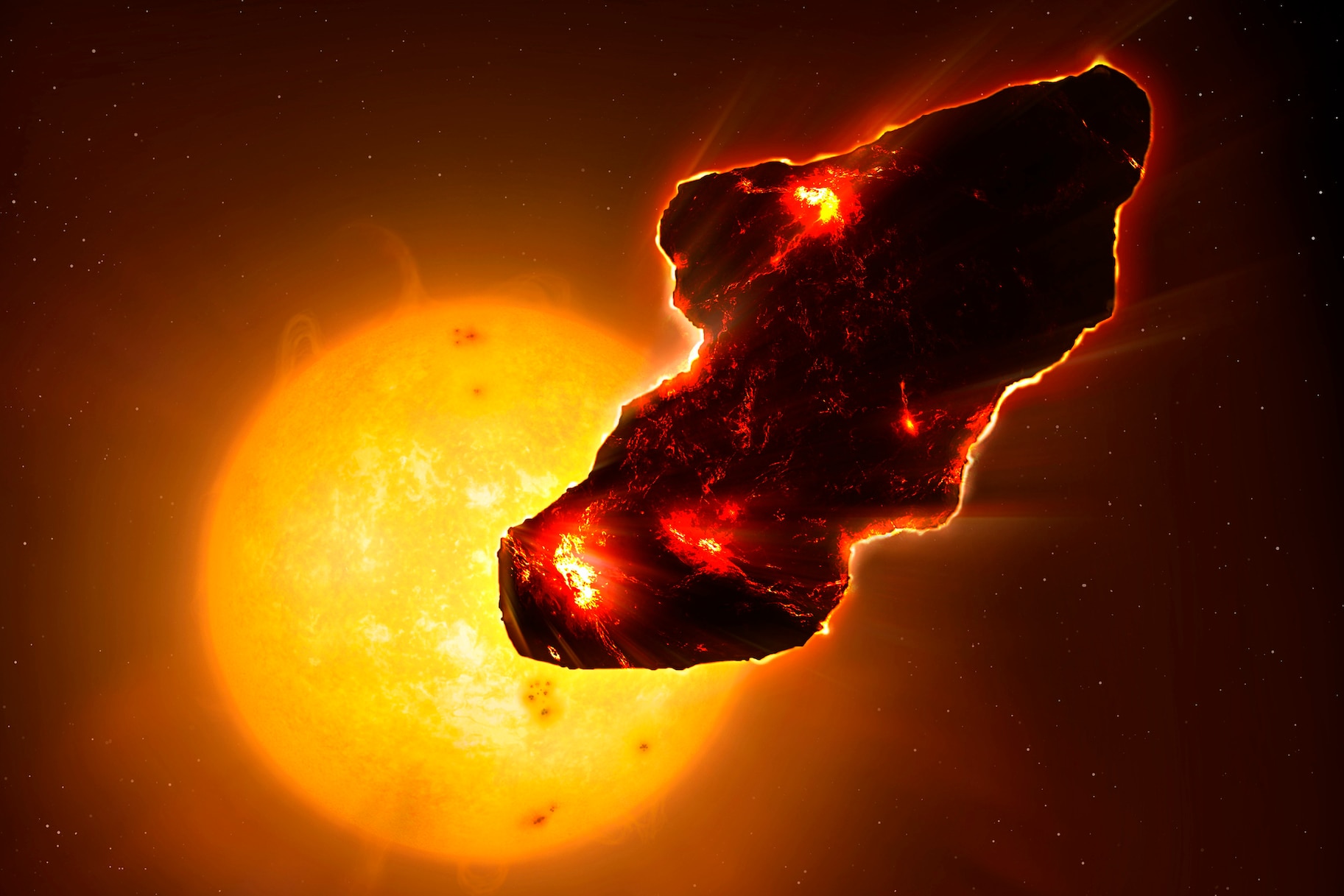Create a free profile to get unlimited access to exclusive videos, sweepstakes, and more!
Mile-wide asteroid found hiding in the Sun's glare
We didn't see you there.

On a nice spring day 66 million years ago, a killer asteroid came from outer space and crushed the dinosaurs into extinction. They couldn’t have seen it coming or done anything about it, but maybe we can. If the events of Asteroid vs. Earth (now streaming on Peacock!) ever come true and we find ourselves facing down another killer space rock, our only hope will be to see it with enough advanced warning to knock it off course (as tested by NASA's recent Dart mission).
That’s a relatively simple endeavor — in principle if not in practice — for stuff coming from the solar system’s exterior. All we have to do is point our telescopes at the night sky and look. Objects large enough to really threaten Earth aren’t all that difficult to find, but things can get complicated when we look at the interior of the solar system. That’s because looking at things closer in means facing towards the Sun. It’s the astronomical equivalent of trying to see someone’s face when they’re standing in a spotlight, and you don’t know exactly where they are or if there’s a person at all.
That's why, so far, astronomers have only identified about 25 asteroids with orbits entirely inside Earth’s orbit. That might be due in part to their relative rarity, as compared to objects further away than us, but it’s definitely driven by how difficult it is to see inside the glare of the Sun. To make matters worse, many telescopes aren’t designed for looking at or toward the Sun. Scientists needed a specialized instrument for gazing at the right parts of the sky, and they found it in Chile.
There, an international team of scientists used the Dark Energy Camera at the Cerro Tololo Inter-American Observatory to scan the skies during twilight. Each day there were only two 10-minute windows, at the border between night and day, when they could make observations. Despite the laborious and uncooperative circumstances of the work, researchers succeeded in identifying three new objects all orbiting in the interior solar system. Their findings were published in The Astronomical Journal.
Two of those objects, dubbed 2021 LJ4 and 2021 PH27, have orbits which remain entirely inside Earth’s orbit. That means that, pending any unforeseen disturbances, there’s little to no risk that they’ll ever make their way to our home turf. But there was another object, one which could potentially cause some trouble down the road.
Astronomers named it 2022 AP7, an asteroid nearly a mile in diameter and the largest potentially hazardous asteroid discovered in the last eight years. Not only is it hanging out in the inner solar system, closer to our house than we’d like, but its orbit also crosses Earth’s, opening the possibility that the two may one day come into contact. If it ever does, we might be in trouble. An object of that size would cause damage spanning multiple continents. It’s not large enough to wipe out the entire planet, but it would be a particularly bad day.
Luckily for us, it’s unlikely to hit. Sure, its orbit does cross Earth’s path but that’s true of a lot of objects. Orbits are big and the solar system is bigger, even in the interior. Asteroids, and even planets, pale in comparison to the size of the paths they take and the probability that any two will intersect at the same moment is small. That said, we’re glad to know that 2022 AP7 exists, and continued research could identify any other potential planet killers lurking in the Sun’s glare.
Knowing the threats exist is the first step in planetary defense. We can only address what we see coming and the work carried out with the Dark Energy Camera broadens our cosmic view. Now that we’re tracking it, if 2022 AP7 or any other object ever starts feeling feisty, we might be able to do something about it.


























